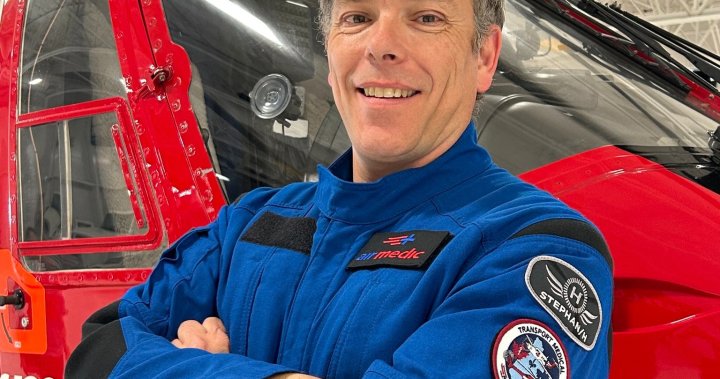In the cold early morning hours of a Quebec summer, tragedy struck near the shores of Natashquan. Four healthcare professionals who had spent their careers lifting others from harm never made it home. Now, communities across Quebec are finding their own ways to lift up their memory.
Last Saturday, colleagues, friends, and families gathered at the headquarters of Airmedic, Quebec’s air ambulance service, for a solemn memorial ceremony honoring Jacques Lévesque, Luc Bégin, Kyle Hines, and Annie Deschênes, who perished when their helicopter crashed during a medical transport mission on July 29.
“They went out that day like they had hundreds of times before—ready to save a life,” said Sophie Larochelle, CEO of Airmedic, her voice breaking slightly during the ceremony. “Their dedication to patient care never wavered, not even in the most challenging conditions.”
The memorial garden, now featuring four maple trees planted in remembrance, provides a permanent space for reflection at the Saint-Hubert headquarters. Each tree bears a plaque with the name of one of the fallen crew members—a symbolic gesture that their roots in the organization will continue to grow and provide shelter to others.
Premier François Legault, who attended the ceremony, announced that the four would receive posthumous medals for exceptional service to Quebec citizens. “These were everyday heroes who embodied the very best of our healthcare system—skilled professionals who literally flew toward danger to help others,” Legault said.
The crash investigation by the Transportation Safety Board continues, with preliminary findings suggesting mechanical failure may have played a role when the helicopter went down approximately 22 kilometers from Natashquan in Quebec’s Côte-Nord region. The crew had been transporting a patient from the remote community to a hospital in Sept-Îles when contact was lost shortly after takeoff.
For Béatrice Pelletier, a flight nurse who worked alongside the victims, the memorial offered both comfort and painful reminders. “Jacques always had chocolate hidden somewhere in the helicopter—he said sugar kept him sharp during long flights,” she recalled with a sad smile. “That’s the kind of detail you don’t put in official remembrances, but it’s what made him real, what made him family to us.”
The ceremony revealed the deep connections between air ambulance crews and the communities they serve. Representatives from several Indigenous communities along the North Shore made the long journey to attend, bringing traditional medicines and performing a healing ceremony for the families.
“When you live in remote areas, these air crews aren’t just healthcare workers—they’re your lifeline,” explained Joseph Bacon, a community leader from Pessamit. “Three years ago, they evacuated my grandson during a medical emergency. Without them, he wouldn’t be here today.”
Health Minister Christian Dubé announced that the government will establish a $2.5 million scholarship fund for paramedicine students, naming it after the four crew members. “Their legacy will continue through future generations of emergency medical professionals,” Dubé said.
The tragedy has also sparked renewed discussions about healthcare accessibility in Quebec’s remote regions. According to Statistics Canada data, residents of isolated communities face wait times up to three times longer for emergency medical interventions compared to urban centers, making air ambulance services critical infrastructure rather than just emergency backup.
Families of the victims used the occasion to announce the creation of a foundation supporting the children of first responders who die in the line of duty. The Heroes’ Children Fund has already received over $500,000 in donations from corporations and private citizens touched by the tragedy.
Sylvie Deschênes, sister of flight nurse Annie Deschênes, explained the motivation behind the foundation: “Annie always worried about what would happen to her kids if something happened to her. Now we’re making sure that all first responder families have one less worry during the worst moments of their lives.”
The memorial service concluded with a flyover by three Airmedic helicopters in missing man formation—a traditional aerial salute where one aircraft pulls away from the formation to symbolize a fallen comrade.
For the tight-knit air ambulance community, returning to work after such a devastating loss carries both practical and emotional challenges. Airmedic has implemented enhanced psychological support services and adjusted flight schedules to accommodate crew members still processing their grief.
“You don’t just move on from something like this,” explained Dr. Martin Levasseur, medical director for Airmedic. “But what we can do is honor their memory by continuing the work they believed in so deeply—getting to patients who need us, no matter how difficult the circumstances.”
As Quebec’s harsh winter approaches, the air ambulance teams prepare for their busiest and most challenging season. This year, they carry not just medical equipment on board, but the weight of four absent colleagues and the determination to uphold their legacy of care and courage at 10,000 feet.






